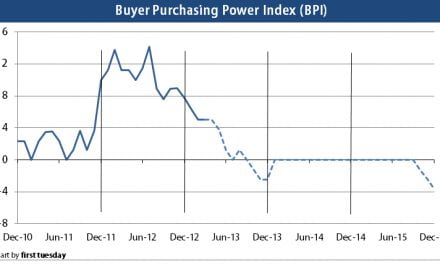How hard is it to obtain a home mortgage? The answer varies based on the mortgage applicant’s ethnicity.
On average, 11.2% of mortgage applications received are denied by the lender, according to data made available by the Home Mortgage Disclosure Act (HMDA). The number one reason for denial is an undesirable debt-to-income (DTI) ratio, followed by poor or lacking credit history.
However, when you break down the rate of mortgage denial by race and ethnicity, the significance of the applicant’s race becomes clear:
- 9.4% of White applicants are denied;
- 12.2% of Asian-American applicants are denied;
- 18.8% of Hispanic applicants are denied; and
- 23.5% of African-American applicants are denied.
The positive: the denial rate for all races is declining, with fewer mortgage applicants denied in 2014 compared to the prior year.
Editor’s note — 2015 data will become available in September 2016.
Mortgage availability is rising, on an upward tilt since 2013, according to the Mortgage Bankers Association (MBA). The MBA’s Mortgage Credit Availability Index is at 128 as of November 2015, where 100 = March 2012. For reference, the index was at an all-time high in 2006 when it was nearly 900 (when all you needed to qualify for a mortgage was a pulse).
However, a glaring difference exists between how often White applicants qualify and non-Whites qualify. This is an institutional problem, and one especially troubling for California, which has a large non-White population. Here, Hispanic households make up 38% of the total population. Since the share of applicants denied is twice as high for Hispanic homebuyers than White Homebuyers, this spells trouble for California’s homeownership rate, which is one of the lowest in the nation, at 54% as of the third quarter of 2015.
The nationwide homeownership rate as of 2014 is:
- 69.4% for White households;
- 45.4% for Hispanic households; and
- 42.8% for African-American households.
In other words, Hispanic and African-American households (a combined 44% of California’s population), and to a lesser extent Asian-American households (14% of California’s population) are limited in their homeownership endeavors due to a lack of mortgage access.
The solution? While avoiding a return to the lending madness of the mid-2000s, when minority homebuyers were targeted for bad mortgages a great many were ultimately unable to pay (e.g. the Bank of America/Countrywide lawsuit), more fair treatment is needed. Most significantly for the housing market, the harm done by unequal mortgage access goes beyond the issue of fairness. It ultimately degrades the homeownership rate, which depresses home sales.
What can real estate professionals do to enhance mortgage access for all homebuyers?
You can continue to be vigilant of lender actions. This entails watching for predatory lending, which was most common during the mid-2000s. But today it more often includes helping minority homebuyers put their best foot forward when applying for mortgages.
First, realize that despite the damning statistics which suggest discriminatory lending, the denial is not always due to direct discrimination based on race or ethnicity, as lenders aren’t actually allowed to make decisions based on a homebuyer’s race or ethnicity. In many cases, the applicant’s high DTI ratio or low credit score are solely to blame, which makes sense since the average minority household has a fraction of the wealth that the average White household possesses.
If the potential homebuyer already has a high DTI, real estate professionals can counsel their clients to improve their DTI by paying down debts before applying for a mortgage. Or, they can talk with the potential homebuyer about the various ways to improve their credit score.
Finally, if you or your client suspects discriminatory lending, have them contact either a counseling agency approved by the Department of Housing and Urban Development (HUD) or the Consumer Financial Protection Bureau (CFPB).















Both you guys are typical blind outsiders (non-minorty). This is a real issue that you belittle. The author is right that discrimination is not necessarily due to lack of education but lack of opportunity to get high paying long term employment that whites enjoy.
Mike’s, “real root causes like the prevalence of single parent households and poor educational outcomes for black and Hispanic families” , shows some understanding, however, these are symptoms, the root causes are due to bias treatment on jobs to minorities.
The author is confusing correlation with root cause. Racial disparities exist not because lenders discriminate. The only color lenders are interested in is green $$$.
The fact is these lending racial disparities follow the racial disparities in credit score almost exactly. Non-hispanic whites have the highest credit scores, and blacks the lowest. Is anyone surprised by this?
The author should stop the race baiting and examine real root causes like the prevalence of single parent households and poor educational outcomes for black and Hispanic families.
Couldn’t agree more, Mike. What a blatantly misleading article. Can’t believe a professional organization would hire such a person to write for them. Could it be unintentional? I don’t see how that would be possible.